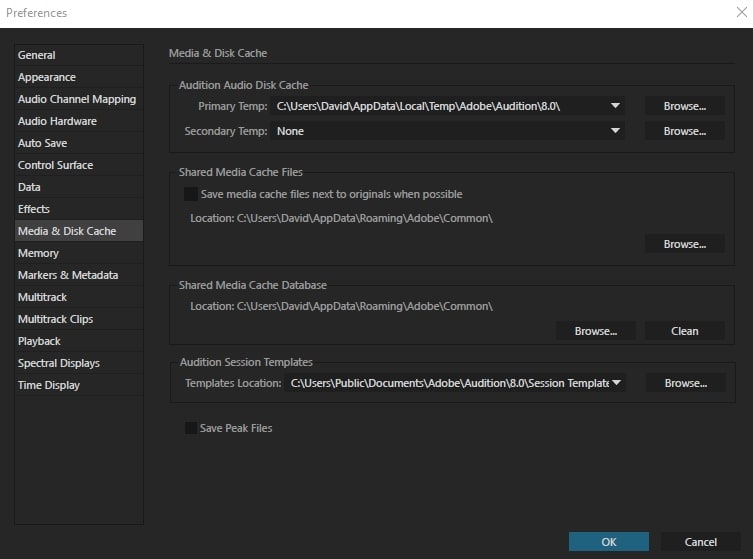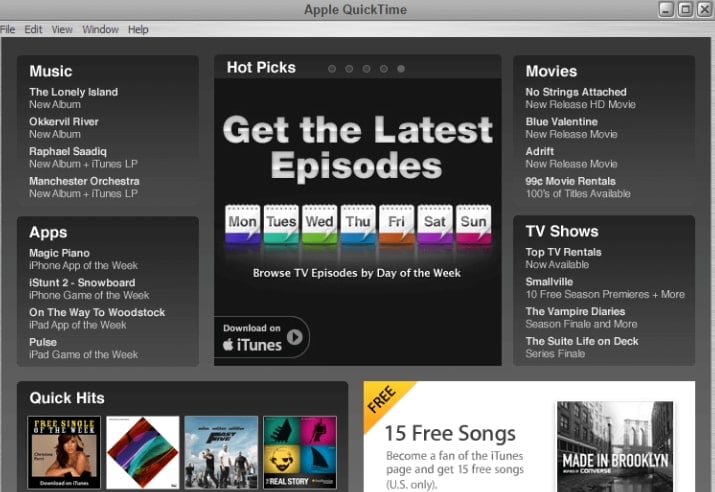It's a common and frustrating problem: you import a video file (like an MP4, MOV, or MTS) into Adobe Premiere Pro, only to find the audio is missing. You might even see an error message like "The file has no audio or video streams" or notice Premiere Pro can't access the audio track. This issue can happen for various reasons, from corrupted cache files to incompatible audio codecs.
Don't worry, this is usually fixable. In this guide, we'll walk you through step-by-step solutions to fix the 'Premiere Pro not importing audio' issue and get your project back on track.
Read More to Get : Best Audio Mixer Software to Trim Your Sound Easily >>
In this article
Common Reasons Why Premiere Pro Won't Import Audio
Before the fixes, let's understand why Premiere Pro is not importing audio. The issue often falls into one of these categories:
- Corrupted Media Cache Files: Premiere Pro creates cache files to speed up performance. If these files get corrupted, Premiere can misread your video and mistakenly believe it has no audio or video streams, making it unable to access the audio track.
- Incompatible or Variable Bitrate (VBR) Audio Codec: This is a frequent cause for the 'premiere pro mp4 no audio' problem. Your video's audio might be encoded with a Variable Bitrate (VBR), common in phone or screen recordings, which Premiere Pro often struggles to process correctly.
- Missing System Codecs (e.g., QuickTime): Certain file types, especially .MOV files, sometimes rely on external frameworks like Apple's QuickTime for decoding. If the necessary codecs are missing from your system, Premiere Pro may fail to process the audio stream, even if the video appears fine.
- Incorrect Source Patching in Timeline: If you get no sound after importing a clip to the timeline, check your Source Patching toggles (A1, V1). If the A1 audio toggle is turned off on the left of your timeline, Premiere will only place the video part of the clip into your sequence.
- File Path Issues or Permission Errors: Premiere requires stable access to your files. If your media is on a slow external drive, network location, or a cloud-syncing folder, the connection can be interrupted. This may prevent Premiere from conforming the audio correctly, leaving the audio track missing.
Four Ways to Solve Audio Importing Issues in Adobe Premiere Pro
Numerous factors can cause Adobe Premiere Pro to stop functioning properly, and if the app won't let you import video files into a project because it has no audio or video streams, there are few things you can do to fix this without having to reinstall the operating system on your computer or the version of Adobe Premiere Pro you're currently using.
1. Clearing the Media File Cache
If you tried to import a video file into a project and the app notified you that it cannot import the file because there is no audio stream, you should head over to the Edit menu and select the Preferences Tab. Once the Preferences window pops up on the screen, click on the Media tab and then proceed to delete all files that are stored in the Media Cache Database and Media Cache Files folders. Restart the application after you've cleaned both of these folders and try to import the video clips into the project once more. If the issue persists, there are a few more things you can do.

2. Renaming the Media Cache Folder
The default location of Media Cache Database and Media Cache Files folders is /Users/Library/Application Support/Adobe/Common on Mac computers and \Users\\AppData\Roaming\Adobe\Common on PC computers. So all you have to do is make sure that all Adobe applications, including the Adobe Premiere Pro, are closed and then go to the location at which these folders are stored and change their names to Media Cache Files_OLD and Media Cache_OLD. Start Adobe Premiere Pro and check if you can import your video files into the editor.
3. Moving Media Files to a Different Folder
If renaming the folders didn't do the trick you can try moving them from their default location. You can move them wherever you want on your computer, but it is best if you pick a location that is easy to remember, just so you can access them quickly in case you need to delete files that are stored in them.
4. Installing the QuickTime Player
Sometimes the simplest solution is also the most effective one. Check if QuickTime is installed on your computer because installing this player can solve the audio importing issues in Adobe Premiere Pro. Furthermore, if you just reinstalled the OS on your computer, you should download and install QuickTime, before launching Adobe Premiere Pro. Once you create a new project go to the Edit menu, find the Preferences submenu and select the Media option. Clean both the Media Cache Database and Media Cache Files folders, restart Adobe Premiere Pro and then import the video files into your project.

The All-in-One Alternative: Avoid Errors and Find Your Sound with Filmora
While the fixes above can work, they highlight a key frustration with Premiere Pro: you're often a technician before you can be a creator. But what if your editor didn't just avoid these errors, but also eliminated the next big headache—finding the right music?
This is where Wondershare Filmora redefines the workflow. It's built for reliability, handling a vast range of formats to prevent the 'no audio' issue. More importantly, it integrates a massive library of royalty-free music and sound effects right into the editor. You don't just avoid problems; you accelerate your entire creative process.
Before you even need to worry about technical glitches, you can find the perfect track. Here’s a sample of what’s waiting for you:

























Here’s a detailed comparison of Filmora's core features against Premiere Pro's:
| Feature | Filmora | Premiere Pro |
| Media Import | Broad compatibility, reliable import. | Supports various formats, requires codecs. |
| Audio Editing | Separate audio, reduce noise, enhance. | Professional effects, track mixing. |
| Timeline Editing | Multi-track, easy drag/trim/arrange. | Multi-track, precise arrangement. |
| AI Features | AI denoise, STT, music recommendations. | AI speech enhancement, audio tagging. |
| User Interface | Clean UI, stable, productive. | Powerful features, popular globally. |
Ready to see how Filmora can help you overcome audio import problems in your editing workflow?
Check out our step-by-step tutorial video and discover how easy it is to import, edit, and enhance your audio and video files in Filmora—no more worrying about issues like premiere pro mp4 no audio.
👉 Watch the full Filmora tutorial now!
Core Features of Filmora
- Hassle-Free Video Import with Broad Compatibility
Filmora supports a wide range of video and audio formats, including MP4, MOV, and MTS. This means you're far less likely to run into issues like premiere pro mp4 no audio or adobe premiere pro import video no audio. Whether you use the file menu, the import button, or simply drag and drop your files, Filmora makes importing media quick and reliable. - Advanced Audio Editing Tools
With Filmora, you can easily separate audio from video, reduce background noise, adjust equalization, and fine-tune volume envelopes. If you've ever faced premiere pro can't access audio or can't access audio premiere pro, Filmora's intuitive audio tools ensure you can edit and enhance your soundtracks without technical headaches. - Intuitive Timeline Editing
Filmora's multi-track timeline is designed for both beginners and experienced editors. You can drag, trim, split, and arrange video, audio, and subtitle tracks with ease. This flexibility helps you avoid common frustrations, letting you focus on your creative vision. - Powerful AI Features
Filmora integrates smart AI tools such as AI audio denoise, automatic speech-to-text subtitles, and AI music recommendations. These features help you quickly solve problems, streamlining your workflow and boosting productivity. - Smooth Performance and User-Friendly Interface
Filmora is known for its clean, modern interface and stable performance, making it easy to get started and stay productive—even if you're switching from Premiere Pro due to persistent audio import issues.
Conclusion
This article helps you fix the no sound issue in Premiere Pro step by step. If you want a simpler and more user-friendly editing experience, you might also consider trying Filmora, which makes audio and video editing easier for beginners and professionals alike.



 100% Security Verified | No Subscription Required | No Malware
100% Security Verified | No Subscription Required | No Malware

